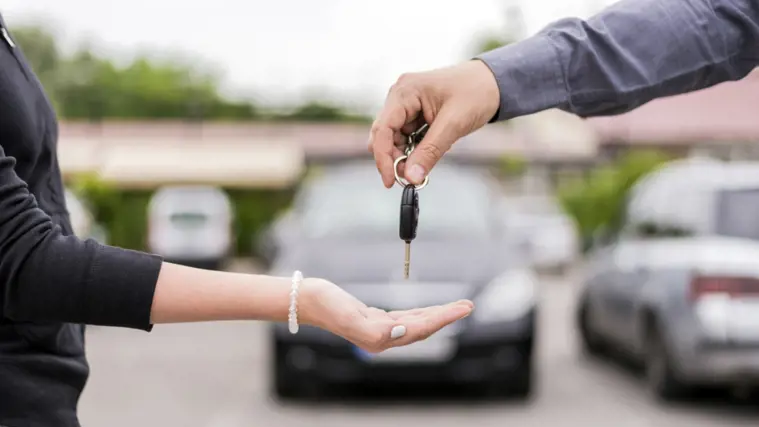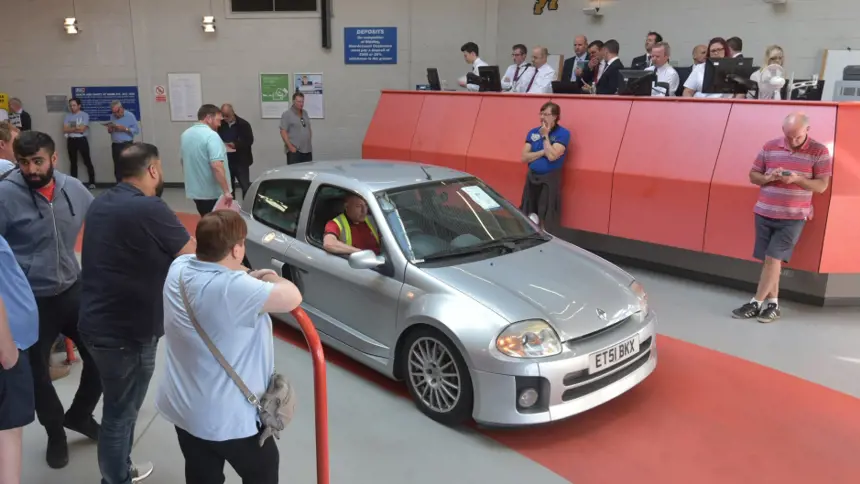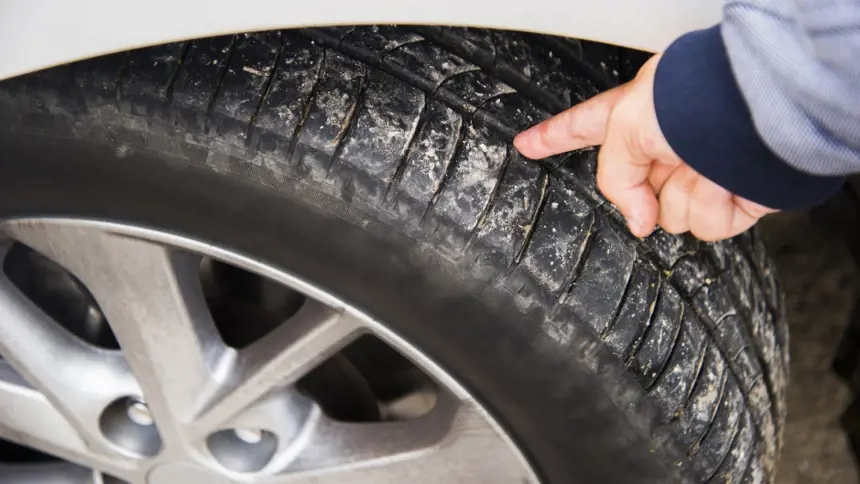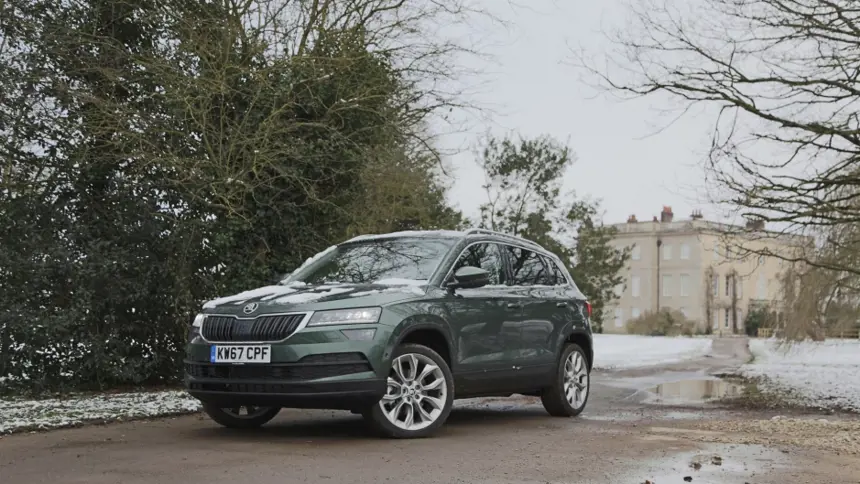How to sell a car
Trying to make the most money from your current car before you buy a new one? Here are some tips to maximise your chances of a strong sale

If you’re looking at a new car, the one that’s currently sitting outside your home will probably need to be moved on. If you’ve never sold a car before, the thought of this can be daunting, but with a bit of preparation and research you can get a great deal.
At the most basic level, selling your car is a good opportunity to make a bit of money. As long as you've looked after it, it's bound to be worth something. Furthering your understanding of your car’s worth is a great place to start on the car selling journey.
Then there's advertising to consider, which platforms you want to use and how you're intending to sell it. There are more ways of selling a car than you might have thought, and you can be sure different types of buyers will offer very different amounts of money.
But of course, once the car is sold you might well be looking for something to replace it with. We can help there, too, because at BuyaCar we have a huge selection of great used cars ready and waiting to be delivered to your door. Head to our search page to get started.
Choosing the right type of sale
You can sell your car in a variety of ways. If you go private, you can probably expect to make a bit more money by ‘cutting out the middleman’. Alternatively, if you sell to a car-buying firm, then you may forego the extra cash but will get rid of the car quickly.
Private buyer

A private sale is completed between two individuals. It's quite a common way for cars to change hands, but it can prove to be time-consuming and stressful. Essentially you're advertising your own car, and you can choose a variety of platforms to do this, whether it's in the local newspaper, a dedicated car-selling website or even on social media.
You then simply wait for the phone to ring and hope it's someone asking to buy your car. This can be a mentally and physically taxing process. You'll need to be on hand to answer any questions about your car, and most buyers will want to have a look at the car first and maybe take a test drive before they consider parting with their cash, so you'll need to be flexible and make time to accommodate.
Be prepared to speak to plenty of people when attempting to sell privately and don't be surprised to see many of these potential buyers come and go without making any serious offers. Unfortunately, there are a number of timewasters out there, but with a bit of patience and perseverance, a genuine buyer will come along and close the deal.
Once you’ve made the sale and have agreed the price, you will then have to administer the change of ownership between you and the buyer. All of this can be done on the V5C logbook, which you send off to the DLVA.
The good thing about opting for a private sale is that you're in control. You value your car at a price you think is fair, and you sell it. More often than not, you'll get much more money from a private sale than any other option on this list.
Part-exchange

This is the easiest and most convenient way to sell your car. It also doubles up as a good way to buy your next car, too, so in many ways, a part-exchange might feel like the best option.
But it's important to make sure you know what you want from a part-exchange deal. It can be easy to be drawn in by the thought of a new car, making you forget all about your old one. You should still seek to get every penny of value from the car you're selling, this is why it's important to ensure you know exactly how much it's worth.
In most cases the company you're dealing with will have a set price they expect to pay for a particular car - often referred to as the ‘trade value’. This will incorporate the chance of resale, so if they think a car is going to sit unsold for too long they will reduce their valuation, regardless of how much it ought to be worth. Don't forget they'll be looking to make a profit, too, so be on your guard, stick to your guns and don’t be afraid to negotiate or even walk away if necessary.
There are plenty of ways to complete a part-exchange, and we even offer them here at BuyaCar. The process essentially involves you offering your current car as a means to pay for the value of your new car. So if you're buying a car for £10,000 and your current car is worth £4,000, you're only required to pay the remaining £6,000 once you've handed over the keys.
If you're able to finalise a good deal, then a part-exchange is by far the most convenient way to complete both the sale of your old car and the purchase of your new one.
Car-buying company

There are many companies that will offer you instant cash for your car. They’re useful if you’re in a hurry, have a debt to settle, or just don't want any hassle. However, this convenience comes at a price. Because they dispose of all the cars they buy at auction, where prices are lowest, this means that these companies operate on very slender profit margins. They can't afford to give you a penny more than the car will achieve at auction.
For this reason, they’re ruthless when it comes to valuing a car. Because you generate the initial valuation online, it’s vital you’re totally honest about faults, damage, keeper history and so on. Naturally, people skirt around the details in order to generate a favourable valuation. All this comes to nothing when the car is actually physically inspected and every single dent, scratch and missed service is taken into account.
Auction

Since the arrival of online auctions such as eBay, we’ve all become a little more familiar with how auctions work. You pay a fee to list your car, set a reserve price (the lowest price you would accept), and wait to see what happens.
Away from eBay, this is just how physical auctions work too. In order to achieve the best prices, auction companies organise sales by vehicle type and age. That way, they attract like-minded buyers who will bid against each other and achieve a better hammer price.
Even so, it’s hard to see why you would use an auction because you’ll invariably get less for your car than a private buyer will offer you. However, if you have something a bit special or rare, they can be effective when sold alongside similar cars at specialist auctions.
Presenting your car
After you’ve decided on how you’re selling your car, you need to do the following:
Appraise your car honestly

Establish the condition of your car, being scrupulously honest about its service history, tyres, interior and exterior, as well as its general appeal. View it through the eyes of someone buying it. You’d spot dents and dings, and so will they. That said, don't undervalue your car.
If it has redeeming features (a good specification, an attractive colour, full service history or it’s cheap to run) consider these, too.
Get at least three valuations
Having established the condition of your car, visit at least three online valuation tools to get an average valuation. You may be shown three values – typically private, trade-in and auction. Auction is the lowest and a good basis on which to build your price or to calculate a dealer’s trade-in offer. Ignore part-exchange because that depends on so many factors beyond your control and is too general to be of use.
Private is useful if you’re looking to sell the car in the classifieds but check the figure against the prices of similar privately-advertised cars being sold there.
Present your car properly

Whether selling your car privately or part-exchanging it, it’s vital it looks its best.
- Clean it inside and out
- Fix stone chips with a matching touch-up pen
- Get dents seen to (body repairs can prove costly, though)
- If the MoT is due soon and you reckon it’ll pass, get a new MoT
- Take pictures of it for the advert. They don’t need to be on a state of the art camera - a smartphone will be more than enough. Make sure the entire car is in each picture, cropped images can be off-putting to some buyers. Also, take the car off your driveway and park it in an uncluttered environment for the pictures to be more attractive.
Write an effective advertisement

Most classified sales forms will make sure you give the most important information – model, age, mileage – but don't forget to give colour, length of MoT, number of former keepers and details of service history. Give details of any interesting options, too. Don’t write in indecipherable acronyms, you’re not paying per word like in the old days of the classifieds.
Negotiate effectively
Keep things polite and friendly but keep your distance, too: you’re selling a car, not making a friend. Keep control and keep quiet, too, volunteering only essential information and answering questions truthfully when asked. Be prepared to move on your price but when you’re not prepared to budge any further, say so politely but firmly.
